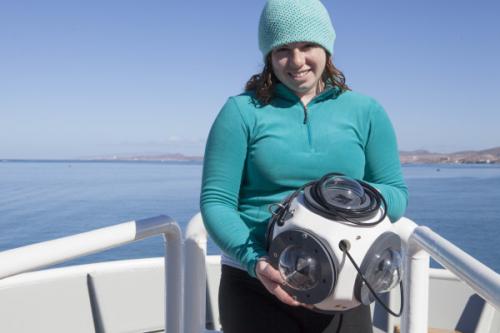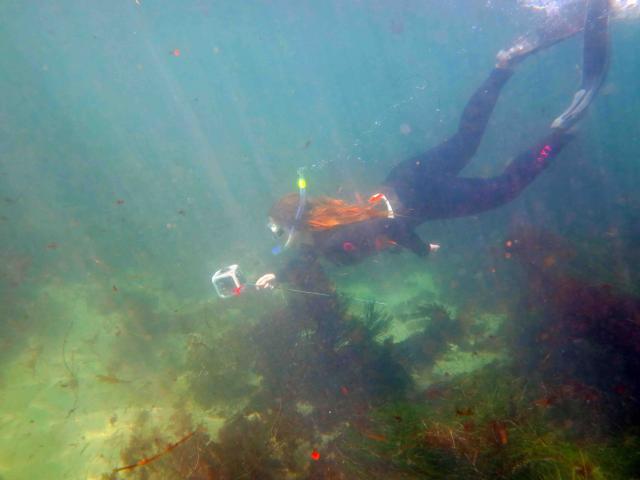
Antonella Wilby graduated with a B.S. in computer science in 2015 and easily transitioned into graduate school, where she works with CSE Prof. Ryan Kastner on underwater robotics and computer vision. It grew out of Wilby's participation as an undergraduate in the Engineers for Exploration program, co-directed by Kastner and Qualcomm Institute research scientist Albert Lin.
 Wilby is focusing her Ph.D. work on interdisciplinary applications of robotics and computer vision in exploration, ecology and conservation. Engineers for Exploration began as a joint partnership with the National Geographic Society, which positioned Wilby to apply and get a Young Explorers Grant from National Geographic. Now, she is updating the NatGeo audience on her research that focuses on development and deployment of a system to detect and monitor the most endangered marine mammal in the world: the vaquita porpoise, with an estimate 100 vaquitas in the wild.
Wilby is focusing her Ph.D. work on interdisciplinary applications of robotics and computer vision in exploration, ecology and conservation. Engineers for Exploration began as a joint partnership with the National Geographic Society, which positioned Wilby to apply and get a Young Explorers Grant from National Geographic. Now, she is updating the NatGeo audience on her research that focuses on development and deployment of a system to detect and monitor the most endangered marine mammal in the world: the vaquita porpoise, with an estimate 100 vaquitas in the wild.
Wilby (at right and below) and colleagues recently began testing a newly-developed underwater camera, the Spherecam. It contains six cameras on the faces of a cube which yield a 360-by-360-degree view of its surrounding environment. Vaquita porpoises are rarely photographed, because there are so few of them, and they don't arc out of the water like dolphins (so they are harder to spot) and they typically stay up to a kilometer away from nearby vessels.
 "Not a single underwater photo of the animal exists," wrote Wilby in National Geographic Voices. "Remote monitoring technologies like camera traps have become ubiquitous in behavioral monitoring and conservation of terrestrial species... Infrared sensors are often used as trigger mechanisms for the camera traps [on land], but water filters out the infrared light too quickly for this to be a viable triggering method underwater."
"Not a single underwater photo of the animal exists," wrote Wilby in National Geographic Voices. "Remote monitoring technologies like camera traps have become ubiquitous in behavioral monitoring and conservation of terrestrial species... Infrared sensors are often used as trigger mechanisms for the camera traps [on land], but water filters out the infrared light too quickly for this to be a viable triggering method underwater."
So instead Wilby and her team settled on acoustic monitoring, using a hydrophone to listen for the narrowband, high-frequency ultrasonic clicks with which vaquitas communicate or echolocate. In order to detect the notoriously shy mammals, Wilby developed the system to capture the clicking sounds. If the Spherecam registers clicks in the target range of around 139 kiloherz, it will automatically turn on and begin recording video.
"This month the SphereCam will be starting its first long-term deployment in the field," Wilby told the Qualcomm Institute's David Wang, "so hopefully we'll get some detections soon."
Read the Qualcomm Institute article about the vaquita project.
Follow Antonella Wilby's blog post on National Geographic Voices.
SphereCam tests on Engineers for Exploration program.

